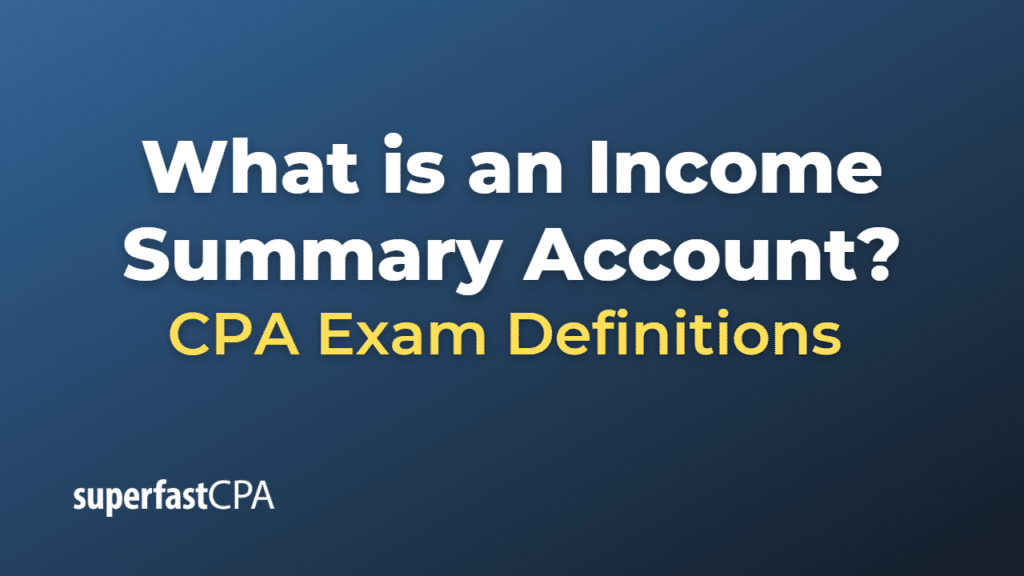Income Summary Account
The income summary account is a temporary account used in the closing stage of the accounting cycle to collect the balances of the revenue and expense accounts, which are then closed. The purpose of the income summary account is to facilitate the process of closing temporary accounts and transfer their balances into the retained earnings account.
Here’s how it works:
- Close revenue accounts: The balances in all revenue accounts are transferred to the income summary account, thereby zeroing out the revenue accounts.
- Close expense accounts: The balances in all expense accounts are transferred to the income summary account, thereby zeroing out the expense accounts.
- Determine Net Income or Loss: At this point, the balance in the income summary account should reflect the net income or loss for the period. If revenues exceed expenses, there will be a credit balance, representing net income. If expenses exceed revenues, there will be a debit balance, representing a net loss.
- Close the Income Summary Account: The balance in the income summary account is then transferred to the retained earnings account, zeroing out the income summary account.
This process ensures that the revenue and expense accounts are ready to track the transactions of the next accounting period, and that the retained earnings account is updated to include the net income or loss of the just-concluded period.
In many computerized accounting systems, this process is performed automatically, and the income summary account is not visible to users. However, it remains a key concept in understanding how the accounting cycle works, especially in manual or educational contexts.
Example of an Income Summary Account
let’s take a simplified example. Suppose we have a company named “XYZ Enterprises” with the following balances in its revenue and expense accounts for the year ending December 31, 2023:
- Sales Revenue: $100,000 (Credit)
- Cost of Goods Sold: $60,000 (Debit)
- Operating Expenses: $20,000 (Debit)
- Interest Expense: $5,000 (Debit)
Here’s how you’d use the income summary account to close these accounts:
- Close Revenue Accounts: Debit Sales Revenue for $100,000 and credit Income Summary for $100,000.
- Close Expense Accounts: Credit Cost of Goods Sold for $60,000, Operating Expenses for $20,000, and Interest Expense for $5,000. Debit Income Summary for the total amount ($85,000).
After these entries, the balance in the income summary account should represent the net income or loss for the period. In this case, it’s a credit balance of $15,000 ($100,000 – $85,000), which represents the net income.
- Determine Net Income or Loss: The balance of $15,000 in the Income Summary account shows the net income of the company for the year.
- Close the Income Summary Account: Debit Income Summary for $15,000 and credit Retained Earnings for $15,000. This transfers the net income to the retained earnings account, zeroing out the income summary account.
After all these steps, the revenue and expense accounts will have zero balances, the income summary account will also have a zero balance, and the retained earnings account will have been increased by the net income for the year.













